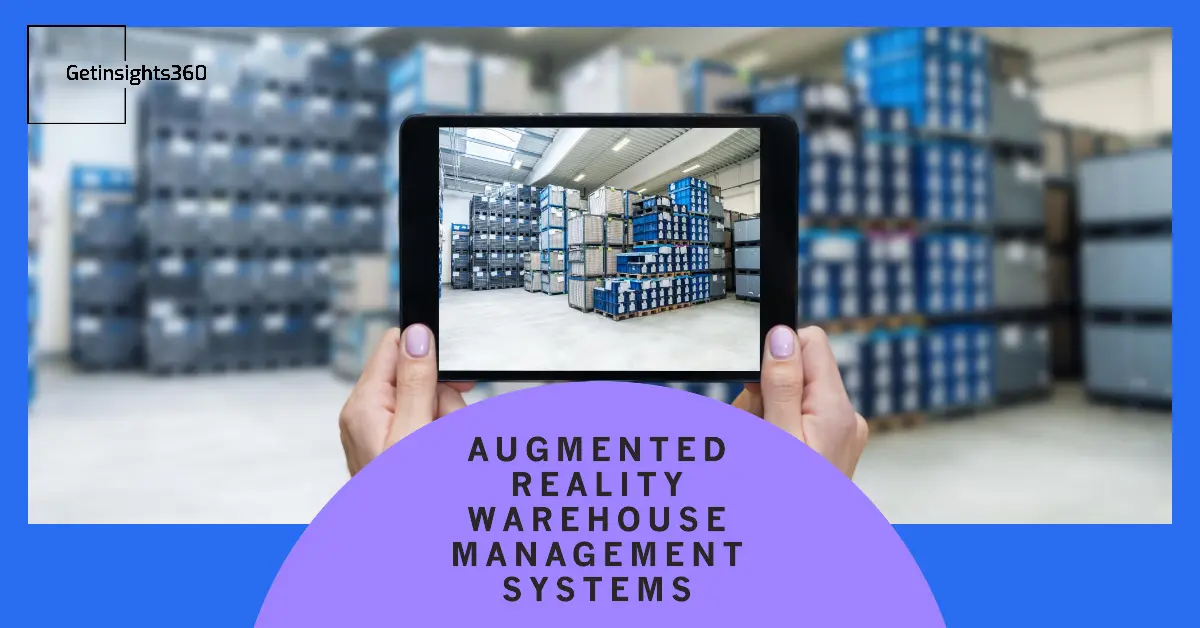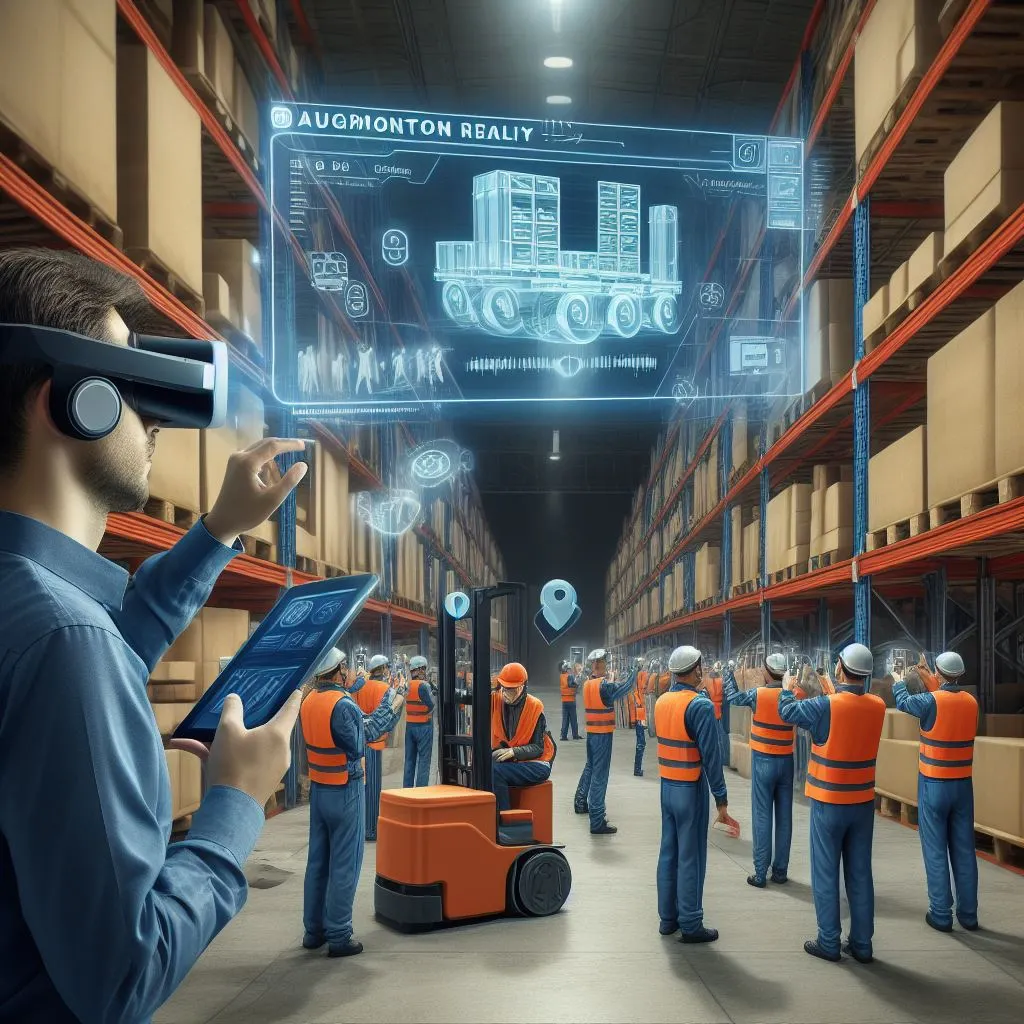
A Guide to Augmented Reality Warehouse Management Systems
Introduction
In the fast-paced world of logistics and supply chain management, efficiency is key. Traditional warehouse management systems (WMS) have long been the backbone of operations, but with the advent of new technologies, there’s a shift towards more innovative solutions. One such solution that’s making waves is the Augmented Reality Warehouse Management System.
Augmented reality (AR) is a technology that overlays digital information in the real world, enhancing the user’s perception and interaction with their environment. When applied to warehouse management, AR can revolutionize how tasks such as inventory management, order picking, and operations are performed.
Challenges in Traditional Warehouse Management Systems
Before delving into the intricacies of augmented reality warehouse management systems, it’s crucial to understand the challenges faced by traditional WMS. These systems often rely on manual processes, paper-based documentation, and static picking methods, leading to inefficiencies, errors, and a lack of real-time visibility into inventory levels and operations.
In a bustling warehouse environment, where time is of the essence, these inefficiencies can result in delayed order fulfillment, misplaced inventory, and increased labor costs. Additionally, as warehouses strive to keep up with growing customer demands and the rise of e-commerce, there’s a pressing need for more agile and adaptable solutions.
Understanding Augmented Reality Warehouse Management Systems
Augmented reality warehouse management systems leverage AR technology to provide warehouse workers with real-time information and guidance directly within their field of view. Using wearable devices such as smart glasses or headsets, workers can access digital overlays that display essential data, instructions, and visual cues, eliminating the need to refer to paper documents or handheld scanners.
One of the primary applications of AR in warehouse management is order picking. Traditionally, order pickers would rely on paper lists or handheld devices to locate and collect items from the warehouse shelves. With AR, these workers can receive visual prompts overlaid onto their surroundings, guiding them to the exact location of each item with precision and efficiency.
Benefits of Adopting Augmented Reality in Warehouse Management
The adoption of augmented reality in warehouse management offers a plethora of benefits for businesses looking to streamline their operations and improve productivity. Some of the key advantages include:
- Increased Efficiency: AR-enabled picking reduces the time spent searching for items, leading to faster order fulfillment and higher throughput rates.
- Reduced Errors: With digital overlays guiding workers, the likelihood of picking errors and misplaced inventory is significantly reduced, improving accuracy and customer satisfaction.
- Enhanced Training: AR technology can be used to provide immersive training experiences for new hires, allowing them to learn complex tasks more quickly and effectively.
- Real-time Insights: By providing real-time data and analytics, AR WMS enables managers to make informed decisions and optimize warehouse processes on the fly.
- Improved Safety: AR overlays can highlight potential hazards or obstructions in the warehouse environment, helping to prevent accidents and injuries.
Key Considerations Before Implementing AR WMS
While the benefits of augmented reality in warehouse management are clear, there are several key considerations that businesses must take into account before implementing AR WMS:
- Integration with Existing Systems: Ensure that the AR WMS can seamlessly integrate with your existing warehouse management software and hardware infrastructure.
- User Training and Adoption: Invest in comprehensive training programs to familiarize warehouse staff with the new technology and encourage adoption.
- Cost and ROI: Evaluate the upfront costs of implementing AR WMS against the potential long-term savings and productivity gains.
- Scalability: Choose a scalable AR solution that can grow with your business and adapt to changing needs and requirements.
- Regulatory Compliance: Ensure that the AR WMS complies with industry regulations and standards for data privacy and security.
Implementing Augmented Reality in Warehouse Management
Once the decision to adopt augmented reality in warehouse management has been made, the implementation process can begin. This typically involves several key steps:
- Assessment and Planning: Conduct a thorough assessment of your warehouse operations and identify areas where AR can make the most impact. Develop a comprehensive implementation plan with clear goals and timelines.
- Hardware and Software Selection: Choose the appropriate AR hardware devices and software platforms based on your specific requirements and budget constraints.
- Pilot Testing: Before rolling out AR WMS across the entire warehouse, conduct pilot tests with a small team to identify any potential issues or challenges and fine-tune the system accordingly.
- Training and Onboarding: Provide extensive training and support to warehouse staff to ensure they are comfortable and proficient in using the new AR technology.
- Continuous Improvement: Monitor and evaluate the performance of the AR WMS over time, soliciting feedback from users and making adjustments as needed to optimize efficiency and effectiveness.
Real-world examples of AR in warehouse management
Several companies have already embraced augmented reality in warehouse management and are reaping the benefits. For example, DHL, one of the world’s largest logistics providers, has implemented AR smart glasses in its warehouses to improve order picking accuracy and efficiency. By providing workers with real-time visual instructions and navigation aids, DHL has reduced picking errors by up to 40% and increased productivity by 25%.
Similarly, global e-commerce giant Amazon has been experimenting with AR technology in its fulfillment centers, using smart glasses to guide workers through the picking process and streamline operations. By integrating AR into its warehouse management systems, Amazon aims to further optimize its supply chain and deliver an even faster and more seamless shopping experience for customers.
Future Trends and Innovations in AR Warehouse Management
Looking ahead, the future of warehouse management with augmented reality looks promising, with continued advancements in technology and innovative applications. Some of the emerging trends and innovations to watch out for include:
- IoT Integration: Augmented reality combined with the Internet of Things (IoT) can enable real-time tracking and monitoring of inventory and assets throughout the warehouse, providing unprecedented visibility and control.
- AI-driven Insights: Machine learning algorithms can analyze data collected from AR devices to generate actionable insights and predictive analytics, helping to optimize warehouse operations and anticipate future demand.
- Enhanced Collaboration: AR technology can facilitate remote collaboration and support, allowing experts to provide guidance and assistance to warehouse workers from anywhere in the world.
- Gesture Recognition: Future AR systems may incorporate gesture recognition technology, allowing users to interact with digital overlays using intuitive hand gestures, further enhancing usability and efficiency.
- 3D Mapping and Visualization: Advanced AR WMS may leverage 3D mapping and visualization techniques to create virtual representations of the warehouse environment, enabling more immersive and interactive experiences for users.
Applications of Augmented Reality in Warehouse Logistics

Beyond order picking, augmented reality has a wide range of applications in warehouse logistics, including inventory management, packing and shipping, quality control, and maintenance. For example, AR can be used to quickly locate and identify items in the warehouse, conduct virtual inspections of incoming and outgoing shipments, and guide workers through complex assembly or repair tasks.
Augmented Reality Warehouse Picking: A Closer Look
Augmented reality warehouse picking is perhaps the most widely recognized application of AR in warehouse management. By superimposing digital overlays onto the real-world environment, AR systems can guide workers to the exact location of each item in the warehouse, reducing search times and minimizing errors. This not only improves order accuracy and fulfillment speed but also enhances worker productivity and satisfaction.
Augmented Reality Warehouse Operations
In addition to picking, augmented reality can transform other aspects of warehouse operations, such as inventory counting, replenishment, and maintenance. By providing workers with real-time data and visual cues, AR systems enable them to perform tasks more efficiently and accurately, ultimately driving greater operational excellence and customer satisfaction.
Conclusion: The Future of Warehouse Management with Augmented Reality
In conclusion, augmented reality in warehouse management holds tremendous potential to revolutionize the way warehouses are managed and operated. By providing workers with real-time information and guidance directly within their field of view, AR systems can improve efficiency, accuracy, and safety, leading to a more agile, responsive, and competitive supply chain. As technology continues to evolve and innovate, the future of warehouse management with augmented reality looks brighter than ever before. It’s only a matter of time before AR becomes the new standard in warehouse logistics, driving greater efficiency, productivity, and profitability for businesses around the world.